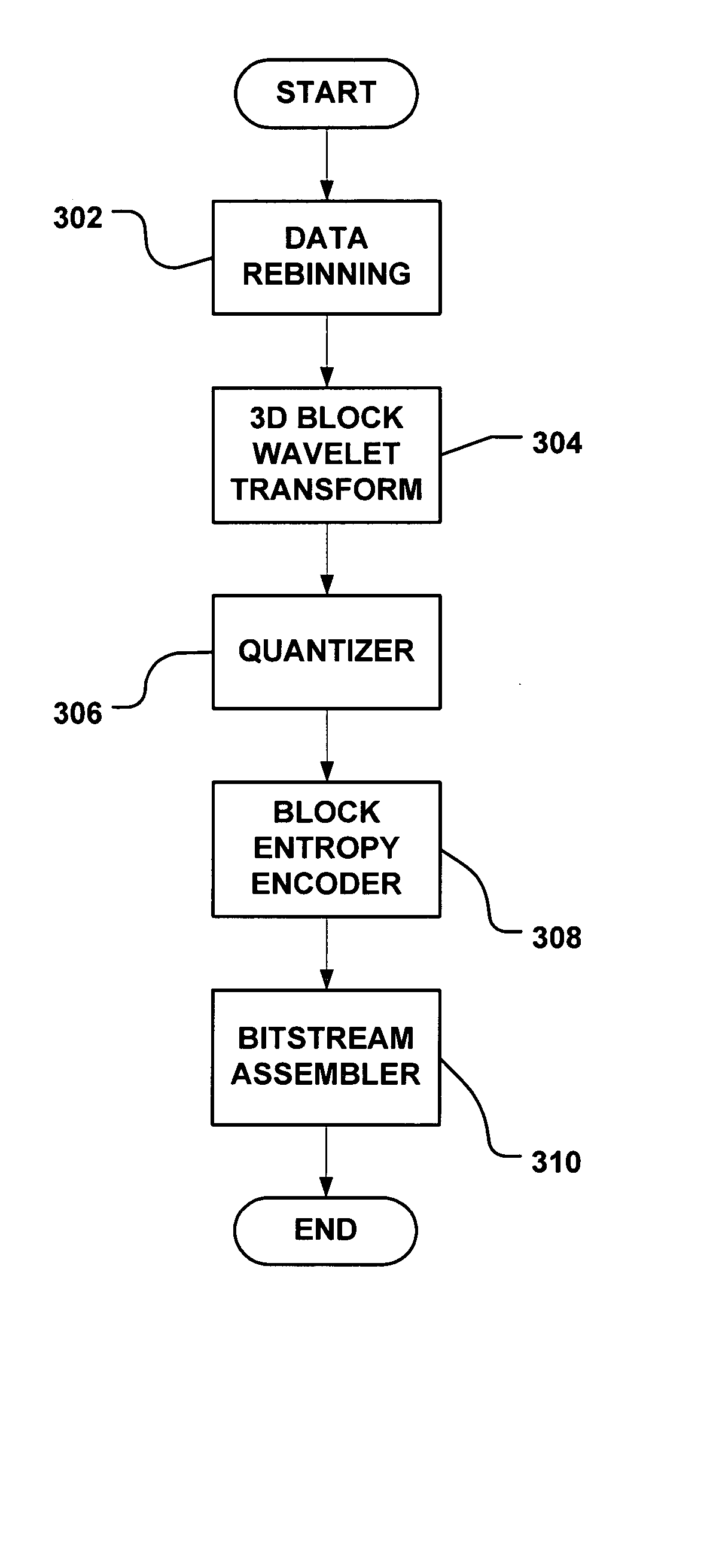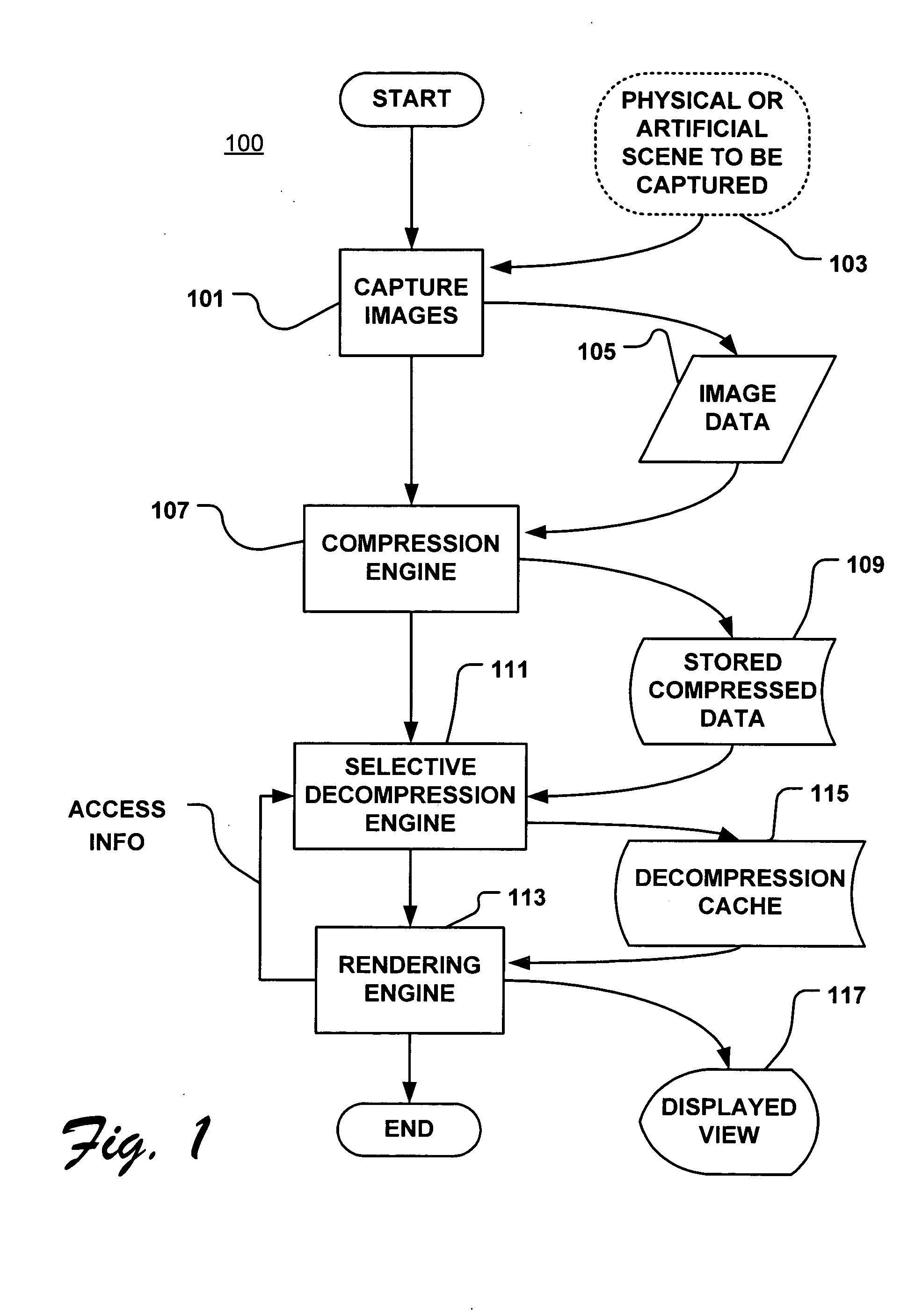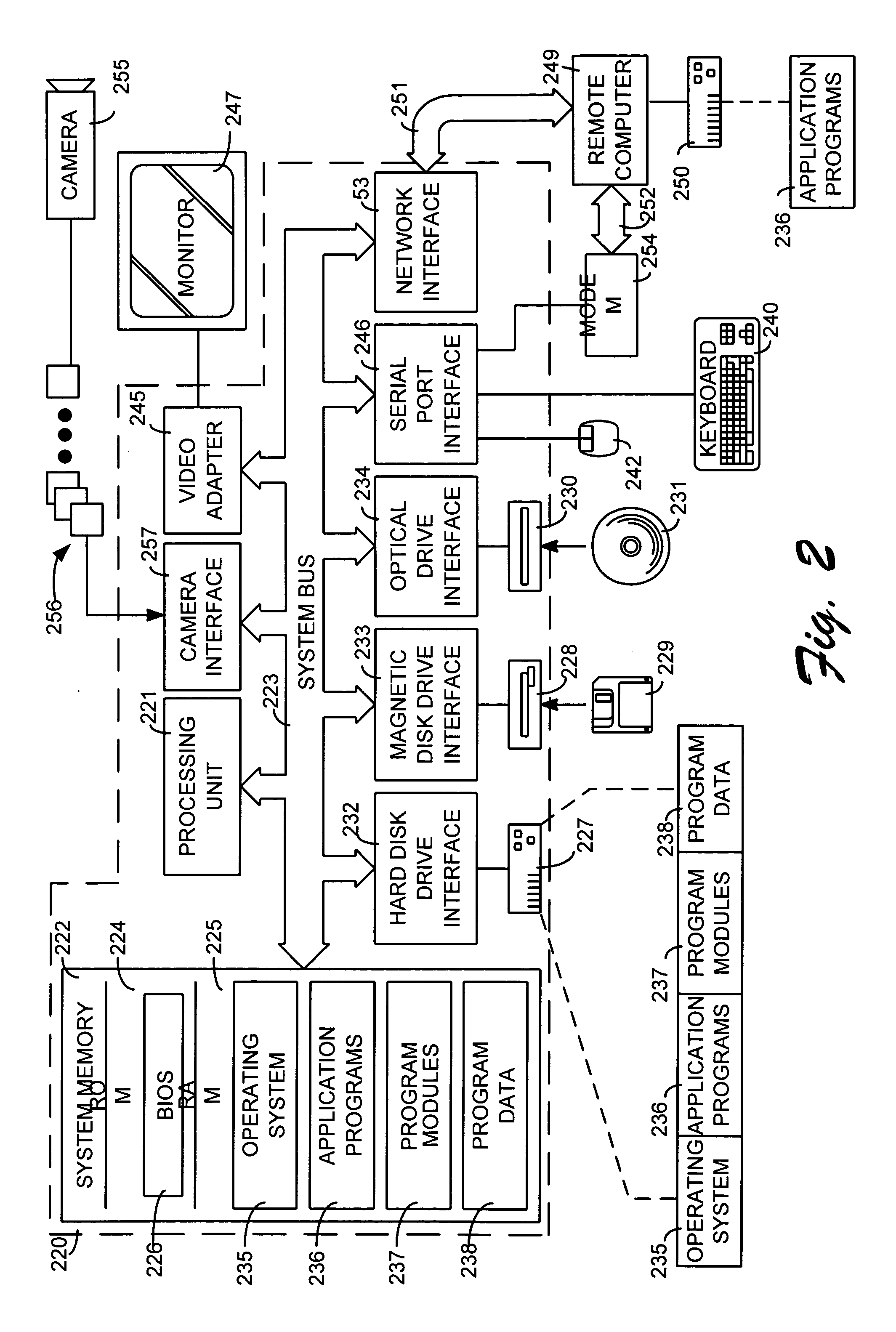Rebinning methods and arrangements for use in compressing image-based rendering (IBR) data
a compression method and image-based rendering technology, applied in the field of image-based rendering, can solve the problems of complex ibr systems, but the ability of most computer processing to achieve real-time compression, and achieve the effect of significantly increasing compression ratios
- Summary
- Abstract
- Description
- Claims
- Application Information
AI Technical Summary
Benefits of technology
Problems solved by technology
Method used
Image
Examples
Embodiment Construction
Introduction
The logical operations of the various embodiments of the present invention are implemented (1) as a sequence of computer implemented steps running on a computing system or like device / appliance, and / or (2) as interconnected machine logic modules within the computing system or like device / appliance. The implementation is a matter of choice dependent on the performance requirements of the computing system implementing the invention. Accordingly, the logical operations described herein are referred to variously as operations, processes, steps, engines or modules. While the following description is directed towards Concentric Mosaic (COM) images / data, those skilled in the art will recognize that other types of mosaic or partial mosaic image / object data may benefit from the various methods and arrangements described herein.
Functional Overview of Certain Exemplary Arrangements
Reference is now made to FIG. 1, which is a block diagram depicting an arrangement 100 that gen...
PUM
 Login to View More
Login to View More Abstract
Description
Claims
Application Information
 Login to View More
Login to View More - R&D
- Intellectual Property
- Life Sciences
- Materials
- Tech Scout
- Unparalleled Data Quality
- Higher Quality Content
- 60% Fewer Hallucinations
Browse by: Latest US Patents, China's latest patents, Technical Efficacy Thesaurus, Application Domain, Technology Topic, Popular Technical Reports.
© 2025 PatSnap. All rights reserved.Legal|Privacy policy|Modern Slavery Act Transparency Statement|Sitemap|About US| Contact US: help@patsnap.com



